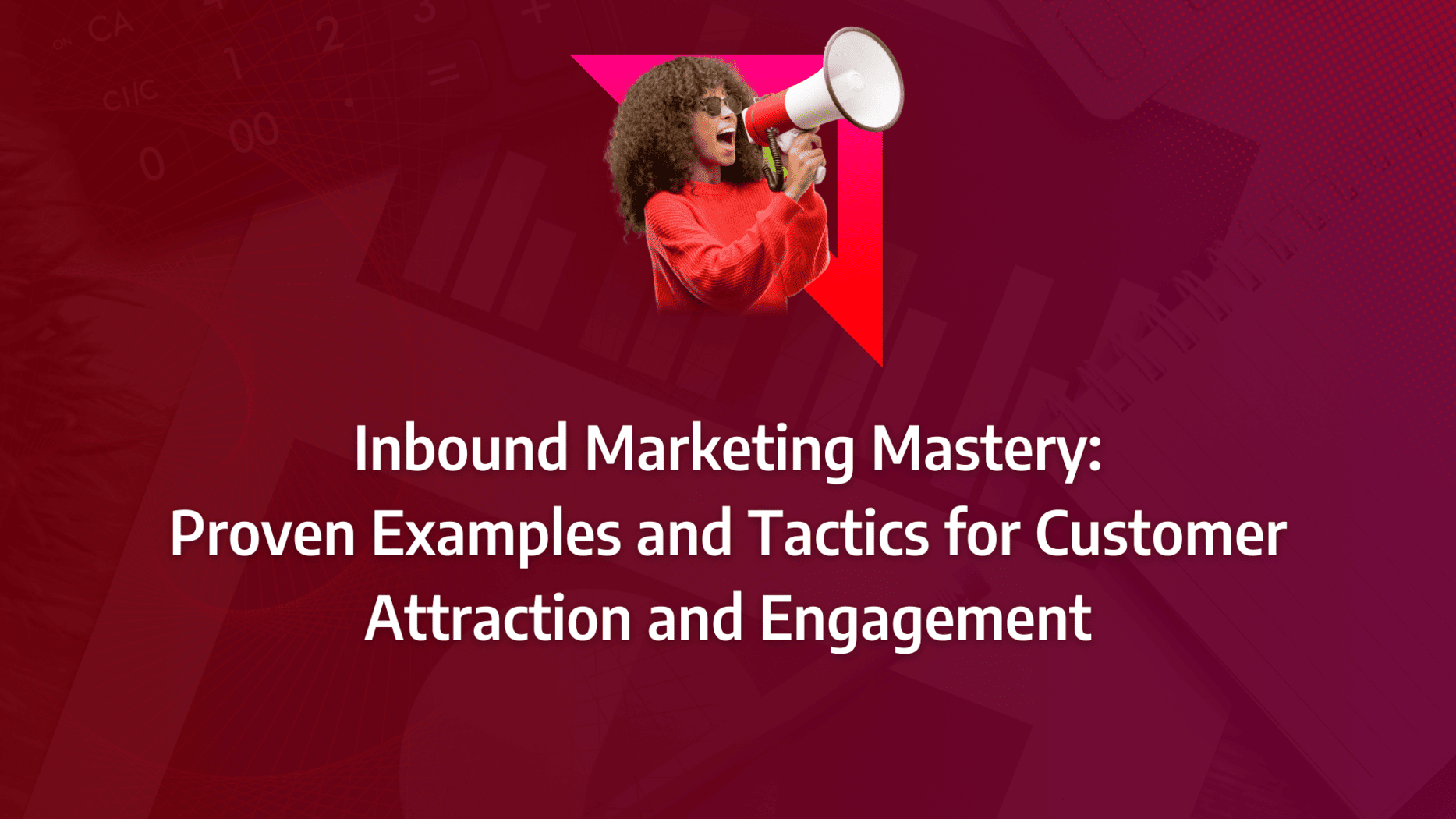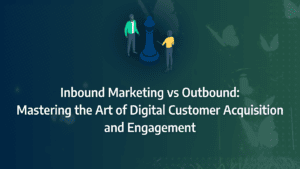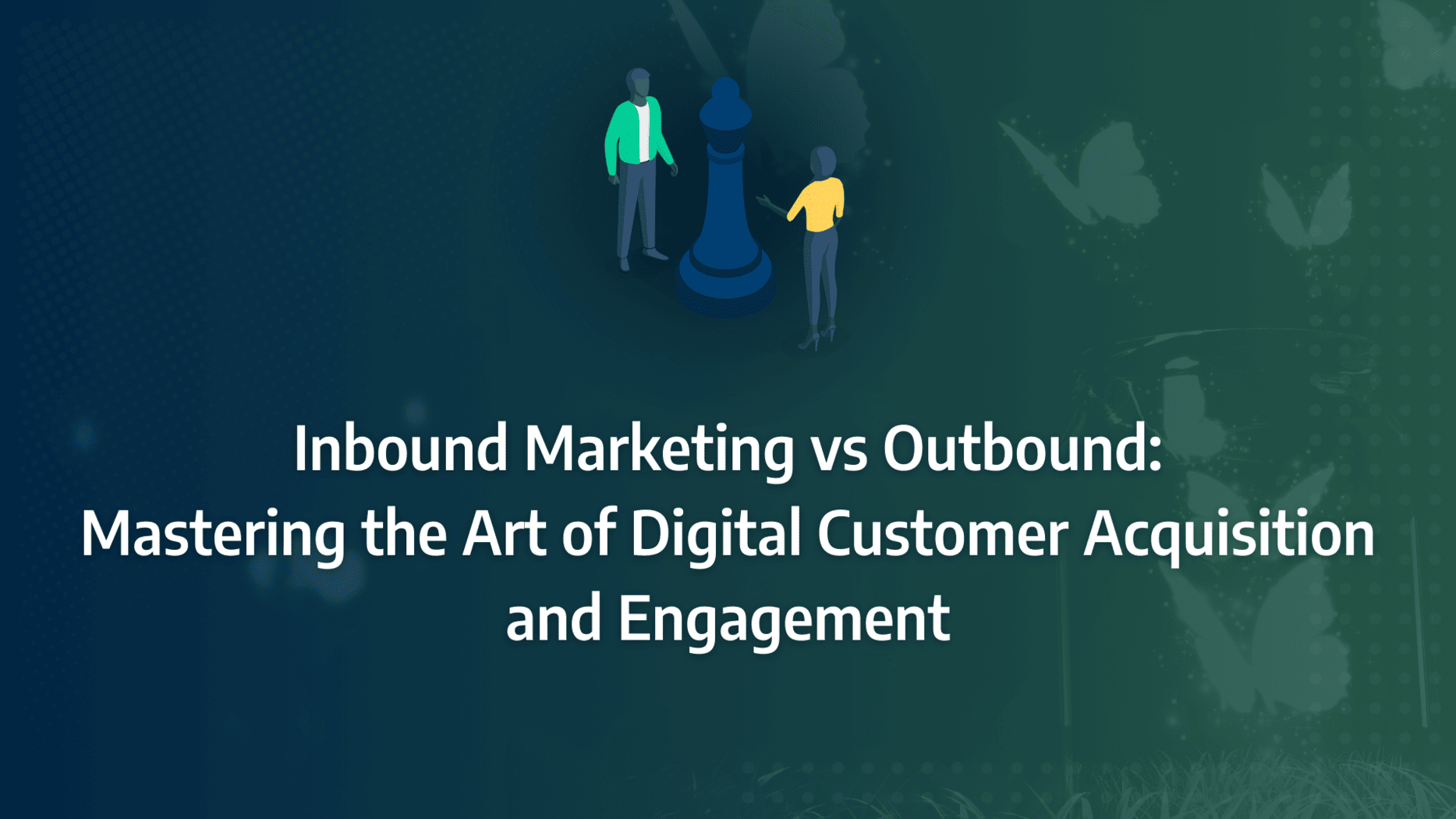Are you tired of chasing after customers with traditional marketing tactics that no longer seem effective? Imagine transforming your marketing strategy into a powerful magnet that attracts and engages your ideal audience. This isn’t just a dream; it’s the reality for businesses that have mastered the art of inbound marketing.
In this blog post, you’ll discover proven tactics that can take your marketing efforts from frustrating and ineffective to highly engaging and impactful. Whether you’re struggling to maintain customer interest or looking to boost your ROI, the insights shared here will guide you on a journey to inbound marketing excellence.
- Transform your marketing strategy by adopting inbound marketing techniques that focus on attracting and engaging customers through valuable content and personalised interactions.
- Focus on content creation as a core strategy in your inbound marketing efforts, ensuring that the content you produce resonates with your target audience and addresses their needs.
- Utilise SEO and social media engagement as powerful tools in your inbound marketing strategy to enhance visibility and foster meaningful customer interactions.
- Measure the success of your campaigns with key performance indicators (KPIs) to understand the impact of your inbound marketing efforts and make data-driven improvements.
- Engage and retain customers by personalising your inbound marketing approaches, creating a more compelling and customer-centric experience.
What are the main benefits of inbound marketing for my business?
Inbound marketing is the creation of valuable, personalised content—such as blog posts, podcasts, social media posts, webinars, newsletters, and e-books—to generate leads for your business. This marketing strategy tailors content to various customer needs, including product pricing, functionality, and accessibility.
Implementing inbound marketing tactics can enhance web traffic, lead generation, return on investment (ROI), customer loyalty, customer retention, and lead nurturing. These improvements significantly elevate your overall marketing effectiveness.
The Three Key Stages of the Inbound Marketing Method
Attract: To attract your target audience to your website, provide insightful content such as blog posts, social media updates, and search engine optimisation (SEO) content. Creating a detailed buyer persona can help you identify and reach your ideal target audience more effectively.
Engage: Engaging your audience involves offering content that addresses their pain points and helps generate leads for your business. Webinars, newsletters, and similar content can tackle issues like product costs, checkout processes, web research, delivery options, and multi-channel shopping challenges.
Delight: Once customers have made a purchase, the goal is to retain them and build long-lasting relationships. This can be achieved through follow-up emails, surveys, and personalised blogs and newsletters, ensuring ongoing engagement and satisfaction.
The inbound marketing method can effectively drive your marketing flywheel, placing customers at the centre and providing them with a consistent, high-quality experience. This approach not only generates momentum for your campaigns but also boosts customer advocacy for your business.
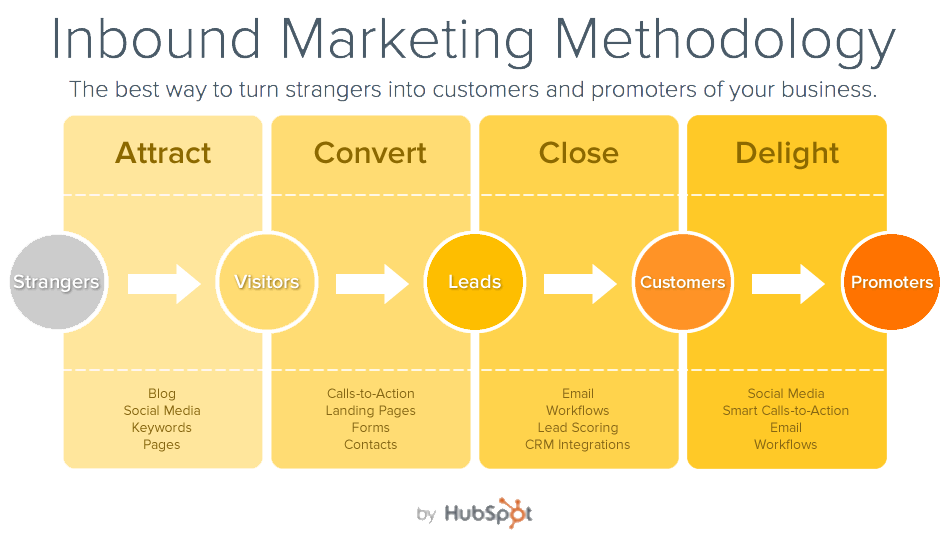
Types of Companies That Use Inbound Marketing
Many companies, including those in media, travel, healthcare, nonprofit, and manufacturing, utilise inbound marketing tactics to boost organic quality traffic, capture and nurture leads, and much more.
Both business-to-business (B2B) and business-to-consumer (B2C) companies leverage inbound marketing. For instance, B2B companies like Hootsuite, Litmus, Intuit, and Autodesk successfully use these strategies. Likewise, B2C giants such as Amazon, Nike, and Asos also implement inbound marketing best practices to enhance their marketing efforts.
This strategy is particularly beneficial for small or start-up companies due to its cost-effectiveness. A variety of inbound marketing tools, such as HubSpot, GatherContent, Jotform, and Unbounce, are available to help you kick-start your campaigns and achieve remarkable results.
What Matters Most?
Focusing on long-tail keywords in your content strategy often leads to higher-quality traffic and conversions, which clients typically overlook in favour of broader terms. Additionally, aligning your content with the specific stages of the buyer journey enhances engagement and effectively nurtures leads, a strategy that many clients discover pays significant dividends.Get In Touch
Five Uncharted B2B Inbound Marketing Examples: Real-World Success Stories
Inbound marketing is a dynamic and powerful strategy that can transform your business. To illustrate its effectiveness, let’s explore five real-life examples of inbound marketing in action.
1. Ryanair: Perfected Buyer Personas
Ryanair exemplifies how well-crafted buyer personas can elevate an inbound marketing strategy. Since launching their TikTok account in 2019, Ryanair has amassed a staggering 1.9 million followers and 25.7 million likes, showcasing their mastery of this inbound marketing tactic.
By focusing on a younger demographic keen on budget travel—namely Gen Z—Ryanair taps into the heart of this audience through authenticity, transparency, and honesty. Their witty, unpretentious videos resonate deeply, avoiding the polished veneer of traditional advertising. This connection, fostered through a perfected buyer persona, builds significant brand loyalty and drives sales.
2. Southend Dog Training: Right Content, Right Place, Right Time
In today’s digital landscape, leveraging social media is essential for effective inbound marketing. Southend Dog Training, a UK-based online dog training group, demonstrates this brilliantly. Founder Adam Spivey grew his TikTok following to 2 million and his Instagram to 925,000 by capitalising on the pandemic-induced surge in new dog owners.
By producing quick, engaging dog training videos at the perfect moment, Spivey presented the right content to the right audience at the right time. This strategic timing and relevant content are key inbound marketing best practices that any business can emulate to enhance engagement and drive sales.
Source: InvespCRO
3. The Babish Culinary Universe: Shareable, Relevant, and Informative Video
The Babish Culinary Universe (BCU), formerly known as Binging with Babish, showcases how video content can be a potent inbound marketing tool. Andrew Rea, the creator behind BCU, captivates audiences by recreating dishes from popular culture, making complex recipes appear simple and easy to follow.
The appeal of Rea’s videos lies in their digestibility and shareability. They are short, step-by-step, and packed with personality, making them highly engaging. By offering valuable content for free, Rea builds trust and strong relationships with viewers, a core principle of effective inbound marketing. As video content continues to dominate, incorporating it into your inbound marketing strategy is a must.
4. MyProtein: Combining Paid Ads with Valuable Content
MyProtein demonstrates the synergy of paid ads and inbound marketing tactics. They effectively use search engine ads to draw in their target audience with compelling titles that lead to informative blog content. This content addresses the audience’s queries and ends with a clear call to action, guiding readers to purchase relevant products.
This strategy exemplifies the harmonious blend of inbound methodology with paid advertising. By answering searchers’ queries and providing valuable information, MyProtein captures interest and converts it into action, showcasing a successful inbound marketing example.
5. Spotify: Strong User Engagement
Spotify’s Wrapped campaign is a prime example of inbound marketing best practices. By showcasing users’ music and podcast listening habits over the year, Spotify creates highly personalised and shareable content. This campaign not only engages users but also encourages them to share their summaries on social media, enhancing Spotify’s visibility and engagement.
By creating content that users find valuable and relevant, Spotify strengthens user relationships and drives engagement. This approach underscores the importance of understanding and leveraging user data to create compelling inbound marketing campaigns.
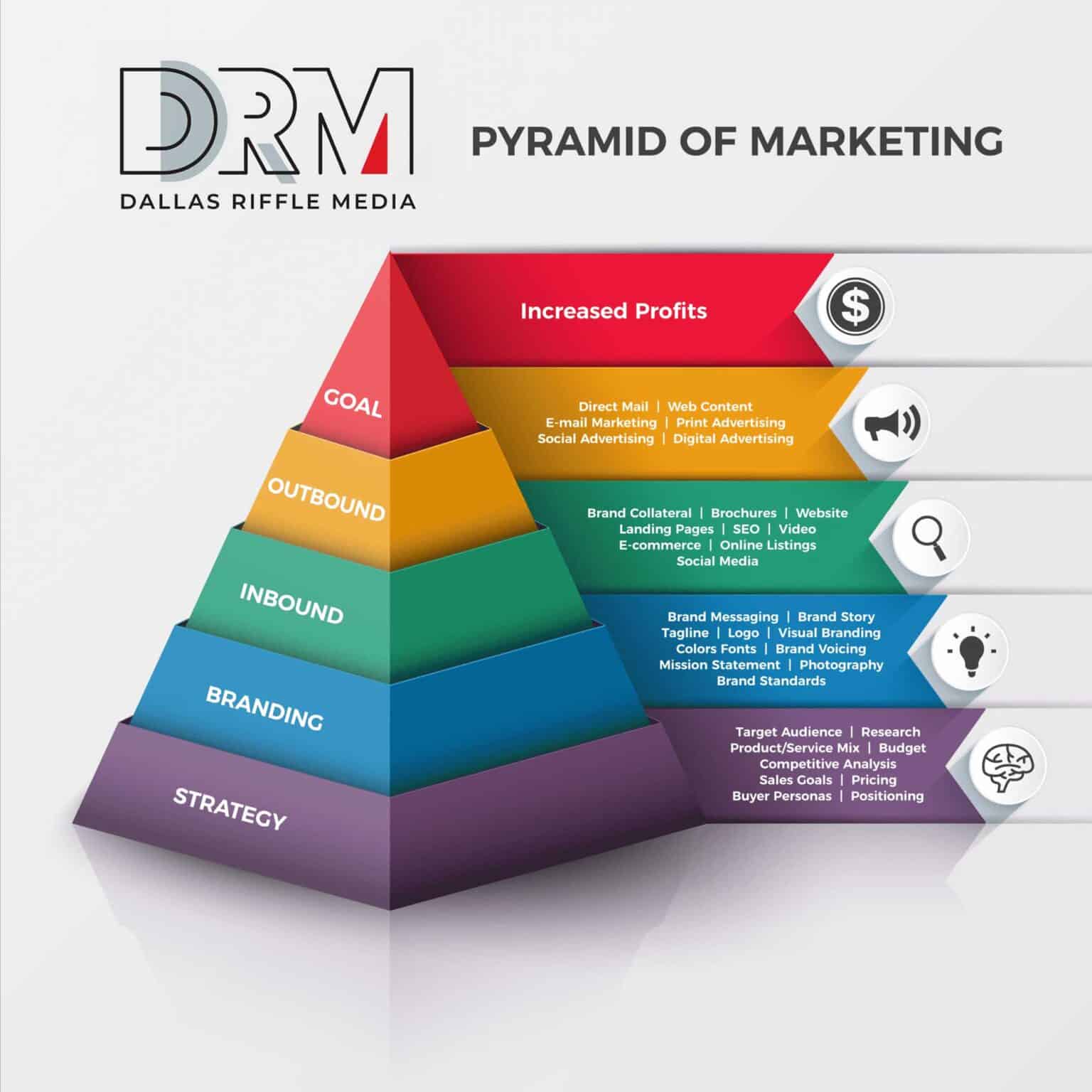
Our Tactical Recommendations
From our experience, regularly optimising landing pages through A/B testing frequently uncovers opportunities for higher conversion rates that clients often miss. It’s also essential to create content designed for sharing, as clients typically see increased reach and new lead generation when they focus on shareable formats. Furthermore, leveraging analytics to refine inbound marketing strategies allows us to adapt quickly to changing audience behaviours, a tactic that clients discover is vital for sustained success.Get In Touch
What are some practical examples of inbound marketing tactics I can implement?
Inbound marketing is all about pulling potential customers towards your brand using a variety of strategies. Below, we explore some inbound marketing best practices through tangible examples of how these tactics can be implemented effectively.
Example #1: Blogging for Continuous Engagement
Blogging is a vital component of inbound marketing. According to HubSpot, businesses that consistently blog are 13 times more likely to achieve a positive return on investment (ROI). Moreover, companies that publish at least 16 blog posts monthly see a 3.5 times increase in website traffic and generate 4.5 times more leads compared to those who blog less frequently.
Maintaining an active blog enables you to address the most pressing questions of your audience. For example, “What is the best way to structure a Google Ads account?” By providing detailed, regular content, you can position your brand as a trustworthy source of information, guiding prospects through the marketing funnel more effectively.

Example #2: Infographics for Visual Communication
While in-depth articles are beneficial, not all prospects have the time or interest to consume long-form content. Infographics offer a quick, visually appealing method to convey complex information, making them a key tool in any inbound marketing strategy.
For instance, an infographic that displays benchmark data for mobile advertising across various industries can generate interest and discussions. Infographics are not only easy to understand but also highly shareable, which can help extend your brand’s reach and convert viewers into customers.
Source: InvespCRO
Example #3: Whitepapers for Detailed Insight
Whitepapers provide an opportunity to delve deeply into a specific subject, offering content that is both comprehensive and rigorously researched—more formal and detailed than a typical blog post. Think of a whitepaper as an in-depth analysis compared to a blog’s overview.
Prospects who download whitepapers are often seeking thorough insights and advanced knowledge. The way you present a whitepaper is crucial—it must look professional to reflect the quality of your brand. Moreover, offering whitepapers in exchange for contact details allows you to cultivate leads with targeted email campaigns, gradually guiding them toward a purchase decision.
Example #4: Ebooks for Establishing Authority
Ebooks are similar to whitepapers but serve as a more extensive resource, positioning your brand as an industry authority. Typically offered for free in exchange for a prospect’s contact information, ebooks are a highly effective lead generation tool.
Creating an ebook requires a significant effort, but it’s worth it. Ebooks can reinforce your brand’s expertise by providing in-depth information that prospects are likely to refer back to, helping you build long-term relationships with potential customers.
Example #5: Case Studies for Demonstrating Value
Case studies, also known as customer success stories, are powerful examples that show how your product or service has effectively solved a client’s problem. For instance, if you’re considering purchasing social media management software, a case study detailing how a similar company benefited from the software could be the decisive factor.
A well-crafted case study serves as social proof, demonstrating your product’s effectiveness and helping potential customers envision similar success for themselves.
Example #6: Webinars for Interactive Engagement
Webinars offer a unique opportunity to engage your audience in a more interactive and personal way. These online seminars allow your team to present valuable information live, fostering real-time engagement and interaction with participants.
Unlike static formats such as whitepapers or ebooks, webinars provide an opportunity for immediate dialogue, helping to humanise your brand and build stronger connections with your audience.
